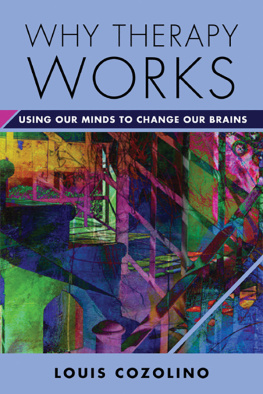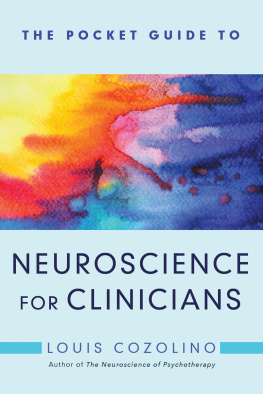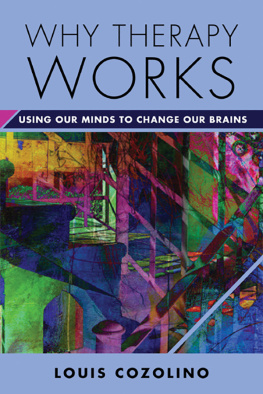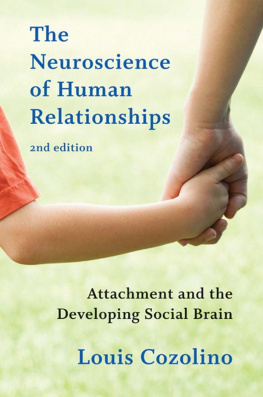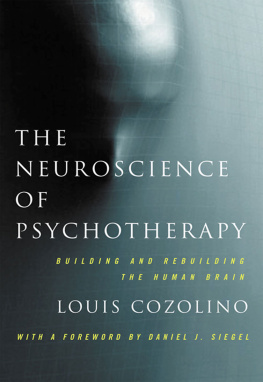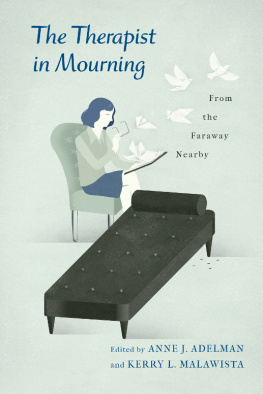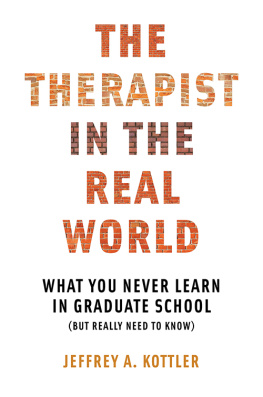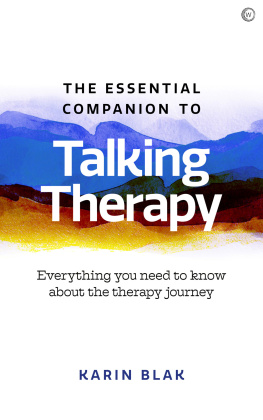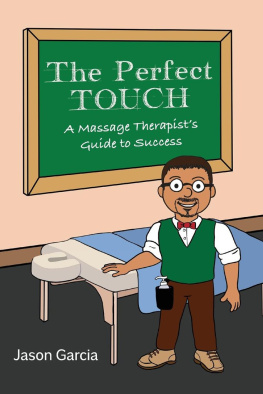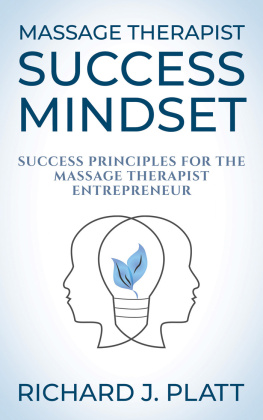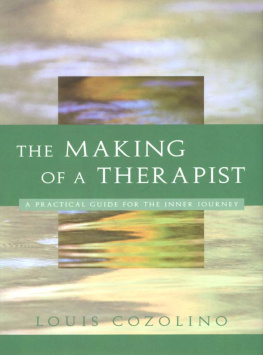THE MAKING OF A THERAPIST
ALSO BY LOUIS COZOLINO
The Neuroscience of Psychotherapy:
Building and Rebuilding the Human Brain
A Norton Professional Book

This book is lovingly dedicated
to the Lieberman family,
Bonnie, Ileene, Sheila, and Marvin,
and to the memory of
Ethel Baumohl.
Contents
PART ONE
GETTING THROUGH YOUR FIRST SESSIONS
PART TWO
GETTING TO KNOW YOUR CLIENTS
PART THREE
GETTING TO KNOW YOURSELF
I WOULD LIKE TO THANK my editor at Norton Professional Books, Deborah Malmud, for her support, guidance, and encouragement through the conceptualization and writing of this book. Many thanks also go to Bruce Singer and Sharon Grambo for their invaluable editorial and creative input.
I am deeply indebted to David Gorton, Faith McClure, and John Wynn, friends and colleagues who enthusiastically contributed their considerable knowledge and wisdom to this endeavor. Thanks also to Hans Miller, Allan Schore, and Dan Siegel for their ongoing moral support and creative input. Finally, I want to thank Susan for always knowing how to make me smile.
Never, never, for the sake of peace, deny your own experience.
DAG HAMMARSKOLD
I WAS ABOUT TO START my first session as a therapist and about to have my first panic attack. All I could do was lean against the clinic wall and feel my body flush with perspiration. After years of sitting in classrooms, I couldnt remember a thing I had learned. Forget about thatI couldnt even remember my clients name. Was it Janice? JoAnne? Joanie? I stared at the clock on the wall, my head spinning faster than the second hand racing toward the hour.
Are you ready? It was my supervisors voice. I looked at him like a scared 5-year-old and he seemed to understand. He placed a calming hand on my shoulder and his expression reassured me that it was normal to be scared. Just remember five things and youll be fine. This is what he told me:
No matter what happens, dont panic;
The client is more nervous than you are;
If you dont know whats happening, keep quiet until you do;
The client will assume you know what youre doing; and, most importantly,
Just make it through the hour!
Armed with this wisdom, I ventured toward the waiting room to meet my client, all the while repeating under my breath, Just make it through the hour, just make it through the hour!
I didnt say much during that first session. My client was a very dramatic aspiring actress. When she wasnt striding back and forth across the room, she was curled up on the couch. She poured out her heart about her family, her lovers, and her stalled career. Meanwhile, I sat, listened, tried to keep calm, and nodded knowingly like the therapists I had seen on training videos. Somehow, I remembered to ask the necessary questions, communicate my concern, and, yes, even call her by the right name.
Soon the hour was up. As she walked out the door she said she felt better and would be back next week. I stood and watched her turn the corner before I let out a sigh of relief; I had made it through my first session! As the months went by, I settled into my new role as a therapist. Gradually, I shifted from survival mode to one of being able to stay calm, listen, and try to be helpful. My early sessions had served their purpose: I was becoming acclimated to sitting across from a client.
Each of us is an experiment of nature, a unique combination of biology and experience giving rise to our strengths, frailties, and hopes. Although we are only human, many of us strive to be more than human. We are blessed with minds capable of constructing ideal images of whom we hope to be and burdened by our disappointments in not living up to these unrealistic standards. The beginning of a new career is a time when imagination and reality collide, when our fantasies are put to the test in the light of day and in the presence of witnesses. If you are reading this book, you have likely arrived at such a point in your life. When you train to be a therapist, you discover that it is not just your intellect that gets tested, but also your judgment, empathy, and maturity. Becoming a psychotherapist is indeed a challenge to both heart and soul.
Like most other professional careers, being a psychotherapist involves mastering a large and ever-growing body of knowledge, learning a variety of skills, and navigating complex relationships. Unlike with other professions, being a competent therapist requires a simultaneous exploration of ones inner world and private thoughts. When we begin training, we embark on two simultaneous journeys: one outward into the professional world and the other inward, through the labyrinths of our own psyches.
The complexity of this inner journey is inadequately addressed in most classes and books for beginners. In this book I cover some familiar topics (such as making interpretations, cultural sensitivity, and identifying resistance), but my true focus is on the personal and emotional aspects of these issues, as they affect the therapist. In the following chapters, I hope to provide you with a new way of thinking about your experience of being a therapistone that involves shuttling between a focus on the client and an attention to your own internal experience both inside and outside of the therapy session. The best therapeutic work occurs when these two streams of awareness are interwoven within the therapist.
Over the years, I have had many students who desired to become therapists while sealing off their inner worlds. They tried to stay above the neck in the hope of avoiding their own feelings and emotions. I often felt sadness when interacting with these trainees because I could sense the pain beneath their need for disconnection. Unfortunately, this intellectualizing defense handicaps both personal growth and the development of good therapeutic abilities. For most students of psychotherapy, the primary challenge is not mastering the academic material, it is summoning the emotional courage to move through the inner space that leads to knowing oneself. The more fearless we become in the exploration of our inner worlds, the greater our self-knowledge and our ability to help our clients.
A few years ago, I took a trip to visit my friend Jason and his son Joey. Three-year-old Joey was an extremely social, observant, and energetic little guy. He would get up early each morning, come into the guest room where I was sleeping, and climb into bed beside me. I would pretend I was asleep as long as I could, hoping to preserve those last few minutes before starting the day. But my playing possum tested Joeys patience; he began singing songs into my ear.
When that didnt work, he developed a strategy of baiting me with questions such as, Uncle Lou, whats your favorite game? or Uncle Lou, do you want French toast for breakfast? One morning, Joey was unusually still. Eventually, I felt him gently patting and stroking my hair. Finally, he said quietly, Uncle Lou, whats wrong with your hair? This time, I took the bait. Whats wrong with my hair? He replied in his most earnest 3-year-old voice, Its too soft for real hair. I had to smile. You see, Joey is African-American and Im not.
Like Joey, we all see the world from our own perspective and through the prism of our unconscious assumptions. How else can it be? Egocentrism comes naturally to us because of the way our brains process information, yet none of us feels that our perspective contains biases. The way we see things simply seems correct. The problem with this belief is that our vision of reality and sense of conscious control are mere illusions.



